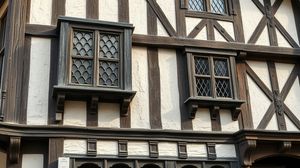
Gray's Inn is one of the four Inns of Court in London, which are responsible for training and maintaining the professional standards of barristers in England and Wales. Known for its stunning Elizabethan architecture and serene gardens, Gray's Inn provides a peaceful sanctuary amidst the bustling city. The Inn has been a significant legal hub since at least the 14th century, showcasing a rich history deeply embedded within the British legal system.
What sets Gray's Inn apart is its tranquil and picturesque gardens, often referred to as 'The Walks', designed in part by Sir Francis Bacon in the 17th century. These gardens offer a peaceful respite, and it is fascinating to think such serene landscapes lie in the heart of London. They provide a touch of nature in a predominantly urban environment.
One intriguing historical fact about Gray's Inn is that it has been the academic starting point for several notable historical figures, including Queen Elizabeth I's trusted advisor, Sir Francis Walsingham. The connection of its members to key historical events provides visitors with a sense of walking through a living history book.
Gray's Inn is celebrated for its long-standing tradition of hosting theatrical performances, a tradition started in the days of Christopher Hatton, a prominent figure in the Tudor court. The Inn boasts a rich heritage of legal drama and literary pursuits, with a history intertwined with the cultural life of London.
The architecture of Gray's Inn combines elements from various periods, which provides an eclectic aesthetic that history enthusiasts will find intriguing. The Hall, built in 1556, remains a centerpiece, its deep timbered roof and oak-panelled walls providing a classic example of Tudor architecture, contrasting beautifully with the surrounding modernity.

Making the Most of Your Visit:
When you visit Gray's Inn, don't miss exploring 'The Walks', the gardens that were partially designed by Sir Francis Bacon. They're a lovely escape from the hustle and bustle, especially during spring when the flowers are in full bloom.
Take a moment to appreciate the architecture of the Hall, constructed in 1556. The timbered roof and oak-paneled walls are quintessentially Tudor and provide a tangible connection to England's storied past.
Try to visit when Gray's Inn hosts one of their traditional theatrical performances. The Inn has a long-standing association with the dramatic arts, and seeing a performance here adds an extra layer of authenticity to your experience.
Look for the historical plaques throughout the grounds. These offer insights into the notable figures who have been associated with the Inn, such as Sir Francis Walsingham. It's a small way to connect with the centuries of history embedded in this place.
If you're a history buff, consider doing some prior reading on Gray's Inn's role in the development of the British legal system. Understanding its historical significance can deepen your appreciation of the place.

Visiting Times & Costs:
Gray's Inn is generally not open to the public except during certain events or specific open days, often related to legal or historical interest events. When open, entry to the grounds such as 'The Walks' is typically free, allowing visitors to enjoy the gardens and outdoor areas.
The Inn's internal buildings and facilities, including the Hall, are generally not open to casual visitors. Special tours might be organized occasionally, and these may require a fee and prior booking.
Accessibility may be limited in certain areas, especially in parts of the historic buildings and gardens, due to their age and the preservation of original architectural features. Wheelchair access may be restricted in some areas.
It is advisable to check in advance for any public access opportunities, special events, or tours that may allow entry.

Address & Map:

Nearby:























